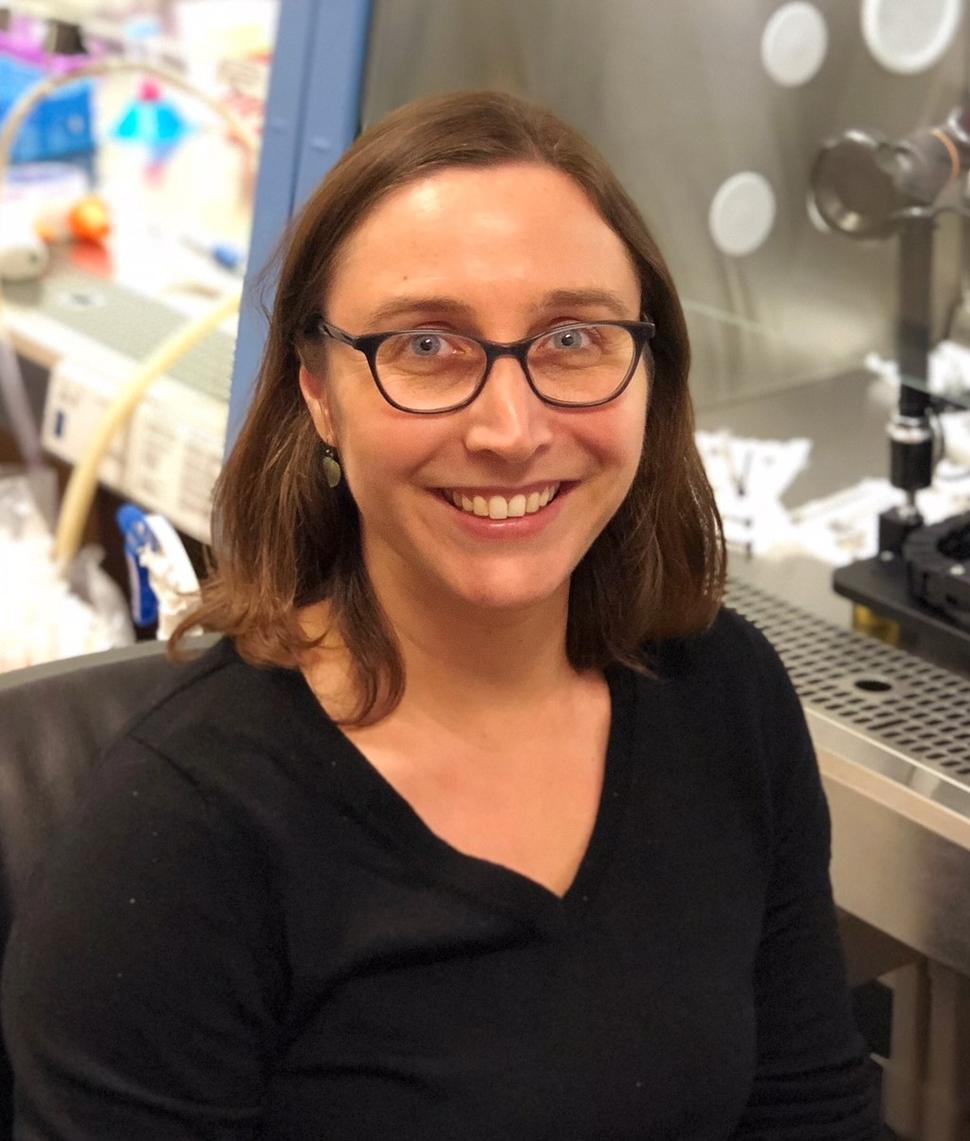Ellen Langer, Ph.D., a CSBC investigator at Oregon Health and Science University (OHSU), trained as a cell biologist and studied cellular plasticity at Washington University in St. Louis and the University of Utah. This work led to her current studies examining breast cancer cell phenotypes using systems biology approaches.
Along with communicating her exciting findings to other researchers, she shares her passion for science with her three children. She encourages their interest in computer coding and biology, as well as shows them what it is like to be a scientist. According to her, “They love coming to my lab and looking at cells through the microscope.”
In this interview, she discusses her views on entering the field of systems biology and its advantages for investigating tumor heterogeneity.
How do you define systems biology?
Systems biology is about looking at the broader interactions between individual components of a complex system to gain insight into function. It lets us step back and better appreciate the interdependencies within the entire system, such as how signals between heterogeneous cancer cells and cells in the tumor microenvironment affect cell behavior and response to therapies.
What is a challenge of systems biology research?
One challenge that I’ve faced is adapting how I approach and design my experiments to generate results that can be used for mathematical modeling of cell plasticity. It is challenging to understand the intricacies of computational and mathematical models, but I enjoy learning about these approaches and think they are an important component of moving forward in the field.
What do you think is a strength of the systems biology field?
One major strength of systems biology is that it involves a team. Systems biologists with different backgrounds and expertise all come together to address complex biological questions. This interdisciplinary approach allows researchers to address hypotheses in innovative ways.
Can you describe your CSBC-supported cancer research?
My lab studies heterogeneity and plasticity in basal-like breast cancer. We found that breast cancer cells can become resistant to targeted therapies by taking on unique differentiation states. Now, we are trying to understand the cell-intrinsic mechanisms, such as epigenetic changes, that drive cells to cancer-promoting phenotypes.
How do you use systems biology approaches to study tumor heterogeneity?
To understand the heterogeneity within and across tumors, we use single-cell RNA sequencing to understand networks that underlie cell phenotypes and single-cell ATAC sequencing to identify changes in chromatin structure. We are also investigating the effects of the tumor microenvironment, specifically the spatial interactions of different cell types within the complex tumor.
Many experimental approaches involve the dissociation of cancer and stromal cells, leading to a loss of spatial information. However, this critical information needs to be put back into the big picture of tumor development and therapeutic responses.
In our CSBC center, we are currently trying to couple bioinformatic modeling approaches with immunofluorescence imaging of tumor tissues to characterize the spatial architecture and cellular associations of cancer cell phenotypes.
Part of your research involves the generation of 3-D tumor tissue using a bioprinter. What are the advantages of this experimental system?
With the bioprinter, we can build tissues in vitro to study the influence of different types of cells on tumors. Also, cells can be manipulated in this system to learn if certain molecules, like transcription factors or cell surface receptors, are critical to oncogenic cellular behaviors or phenotypes.
This model also has benefits compared to cells grown in 2-D culture dishes. When cells are attached to plastic, they have different behavior than cells grown in a 3-D environment. Additionally, co-culturing cancer cells in 3-D tissue, when they are surrounded by different types of cells, like fibroblasts and endothelial cells, is a better representation of tumor physiology in cancer patients.
Further, we can use human cells to build these self-organizing models, which can be cultured up to three weeks. Like human and mouse tumor tissue, bioprinted tissue can be fixed and stained to assess the spatial organization and phenotypes of different cells.
How does your cancer systems biology research ultimately help patients?
We are working to identify master regulators that drive phenotypic changes that promote therapeutic resistance in heterogeneous tumors by analyzing transcriptomic and epigenetic changes in cancer cells.
Ultimately, our goal is to develop combination therapies that inhibit treatment-resistant cancer cell plasticity.
